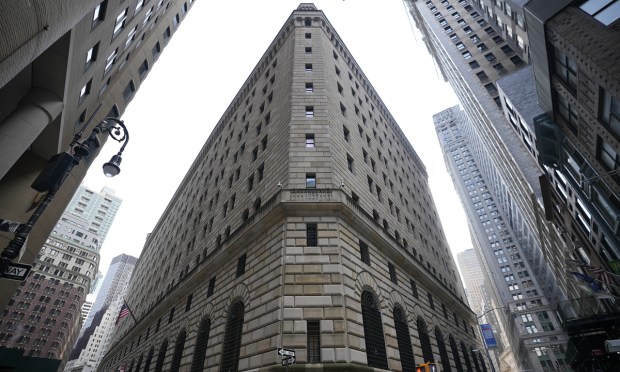
America’s banks are in a steadier place than they were in 2008.
But according to a recent Federal Reserve report, that doesn’t mean they’re completely healthy.
Writing on the Liberty Street Economics blog last week, the Federal Reserve Bank of New York noted that this year’s banking crisis spotlighted the banking sector’s vulnerability to a sudden spike in interest rates.
“Specifically, banks’ ability to limit the pass-through of rate-hiking cycles into deposit rates allows them to benefit from higher rates, but only gradually,” the post said.
“Yet, in the short-term, banks might suffer losses in their securities portfolio that might, in turn, induce funding dry-ups and substantially weaken effective capital levels.”
Still, the bank’s Capital Vulnerability Index based on the 2008 crisis is at “historically low levels,” around 1.55% of GDP.
“Driven primarily by loan provisions, the spike at the onset of the 2020 COVID-19 pandemic subsided as unemployment — and, in turn, expected credit losses — returned to pre-pandemic levels toward the end of 2021,” the blog post said.
The Fed writers add that the Capital Vulnerability Index based on the 2022 scenario is still somewhat elevated compared recent historical standards, with vulnerability originating from “banks’ exposure to a sudden drop in the value of securities following a hypothetical further increase in interest rates.”
And while funding is thought to be stable based on the Fed model, the economic value of banks’ securities portfolios fell as interest rates rose.
“The subsequent gradual increase in net interest margins, largely driven by the limited pass-through of higher rates into deposit rates, might eventually make up for the initial drop in securities’ values, but the potentially rapid losses might still expose banks to capital shortfalls,” the report said.
Last week also saw the release of the Federal Reserve’s October Senior Loan Officer Opinion Survey (SLOOS) on Bank Lending Practices, which showed that lending standards have tightened and demand has slowed in the third quarter of 2023.
“The survey showed that lending standards have tightened across various loan categories, including loans to businesses and households,” PYMNTS wrote. “This tightening is attributed to factors such as the uncertain economic outlook, reduced risk tolerance, deterioration in loan credit quality and collateral values, and concerns about funding costs.”
As for business loans, the Fed found that lending standards have tightened and there is diminished demand for commercial and industrial loans to companies of all sizes. By the same token, there’s also an overall tightening of standard and cooling demand for commercial real estate loans. The survey marked the second quarter in a row in which banks were tightening their lending criteria.